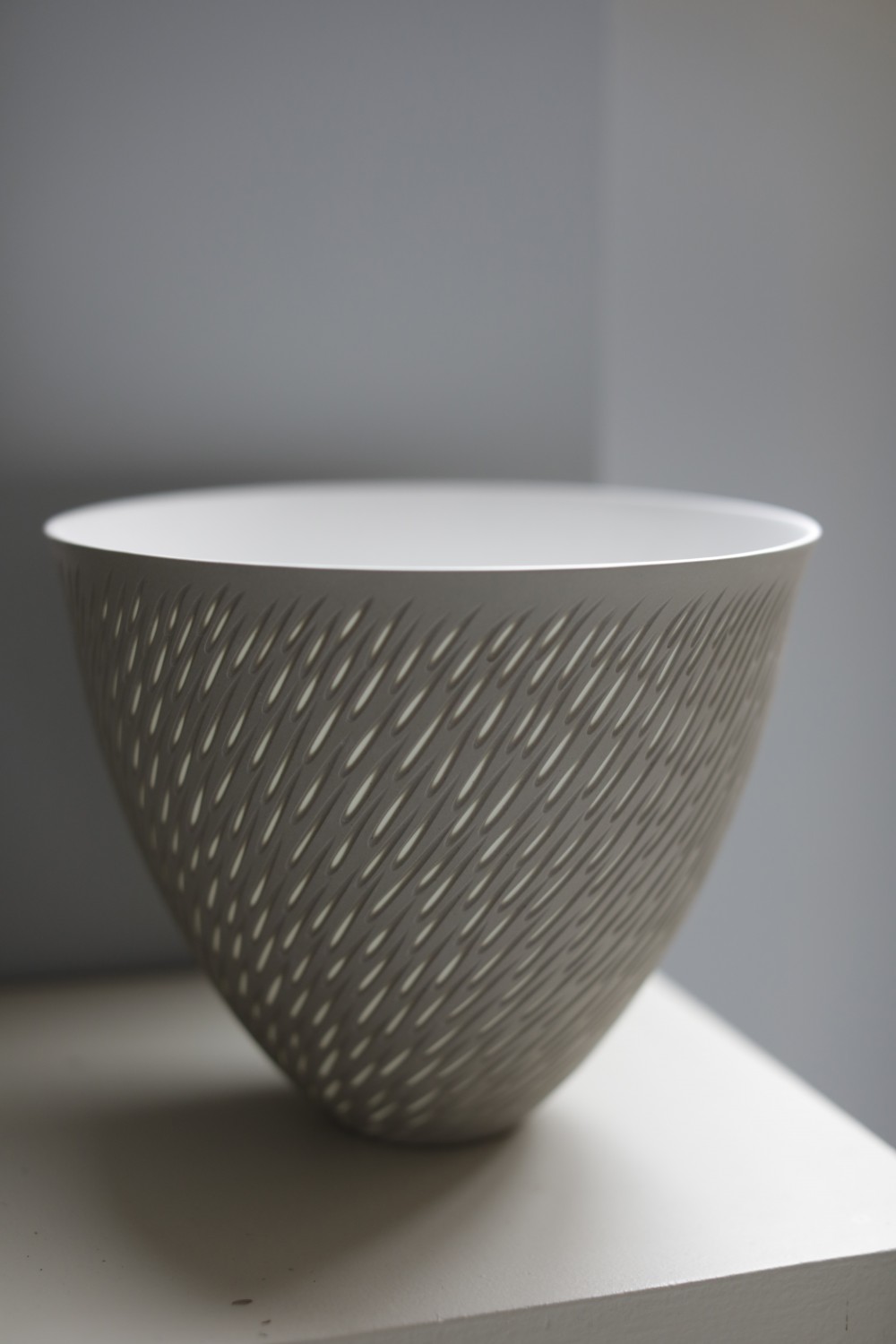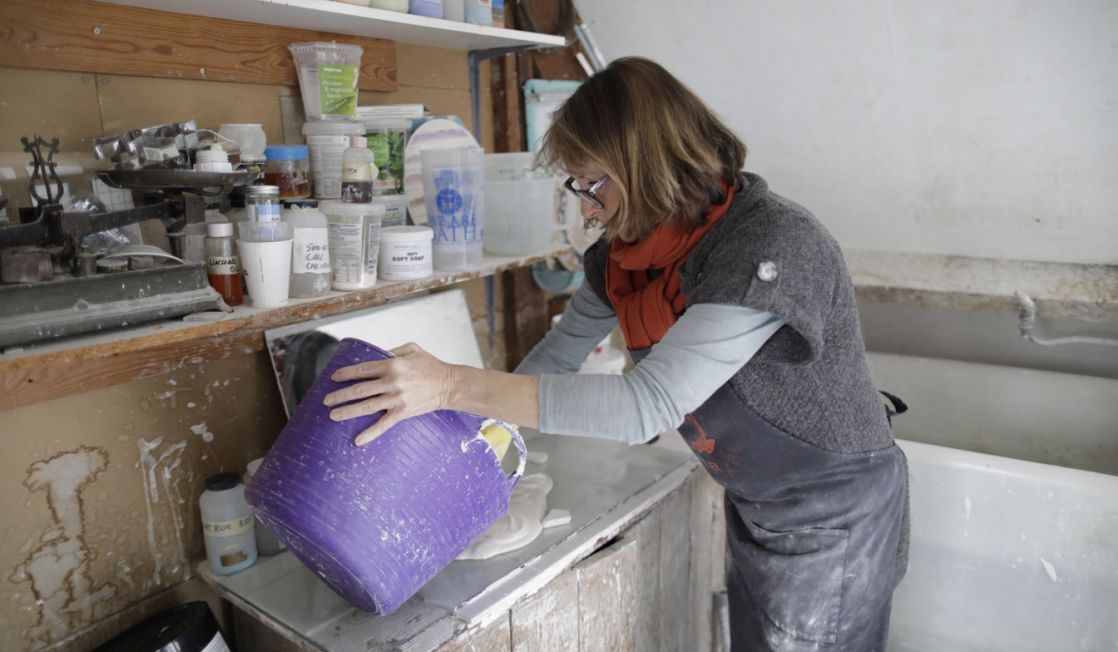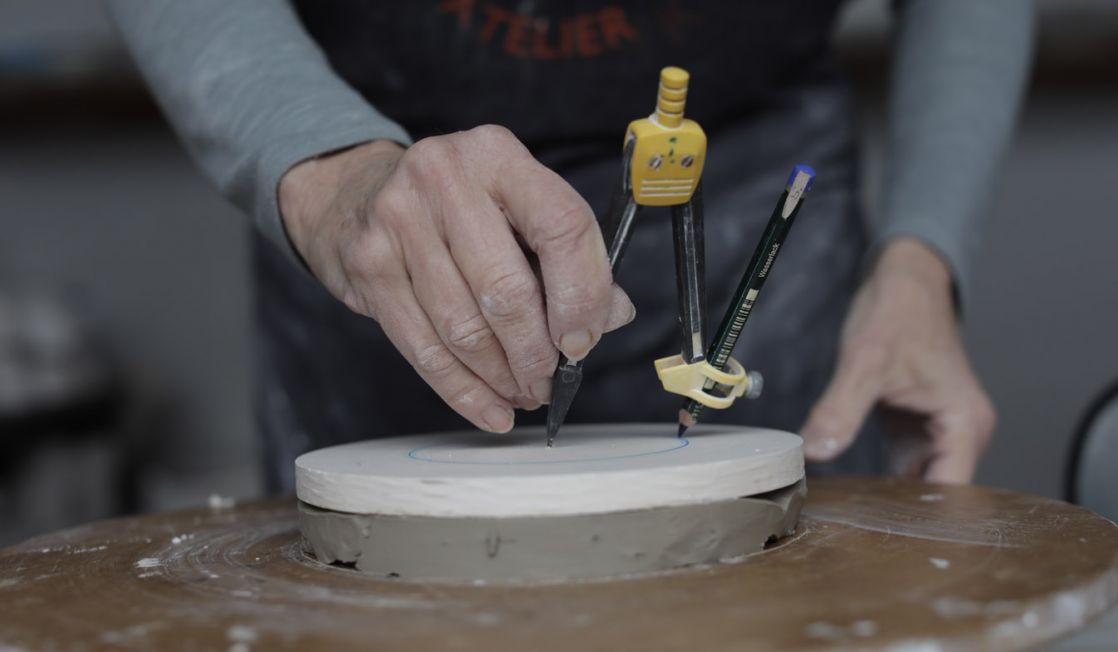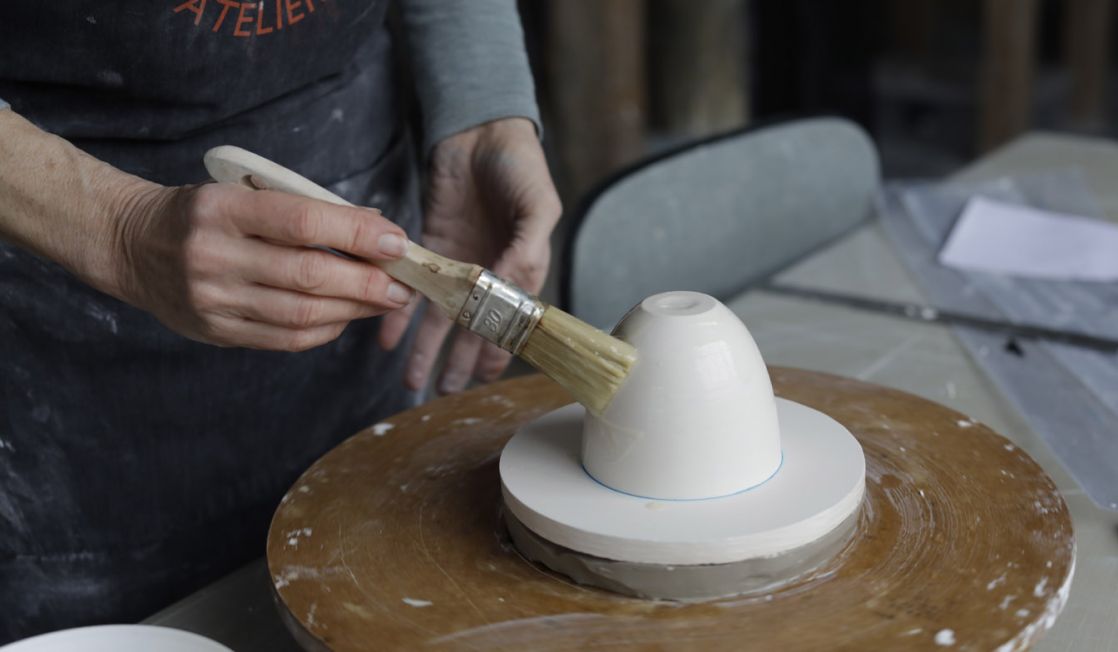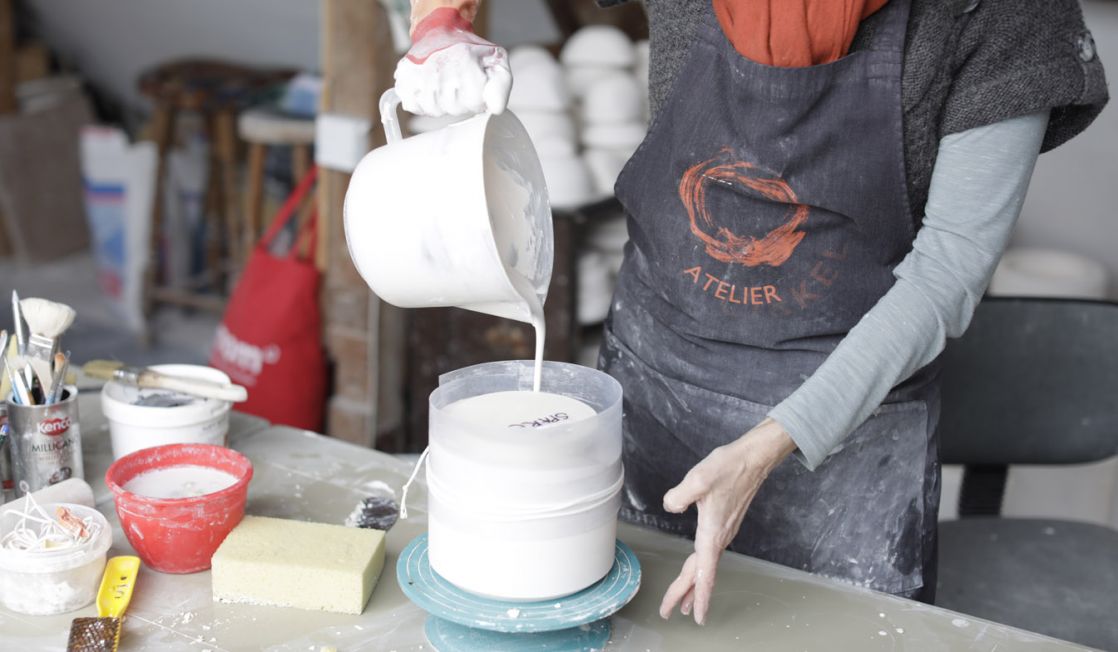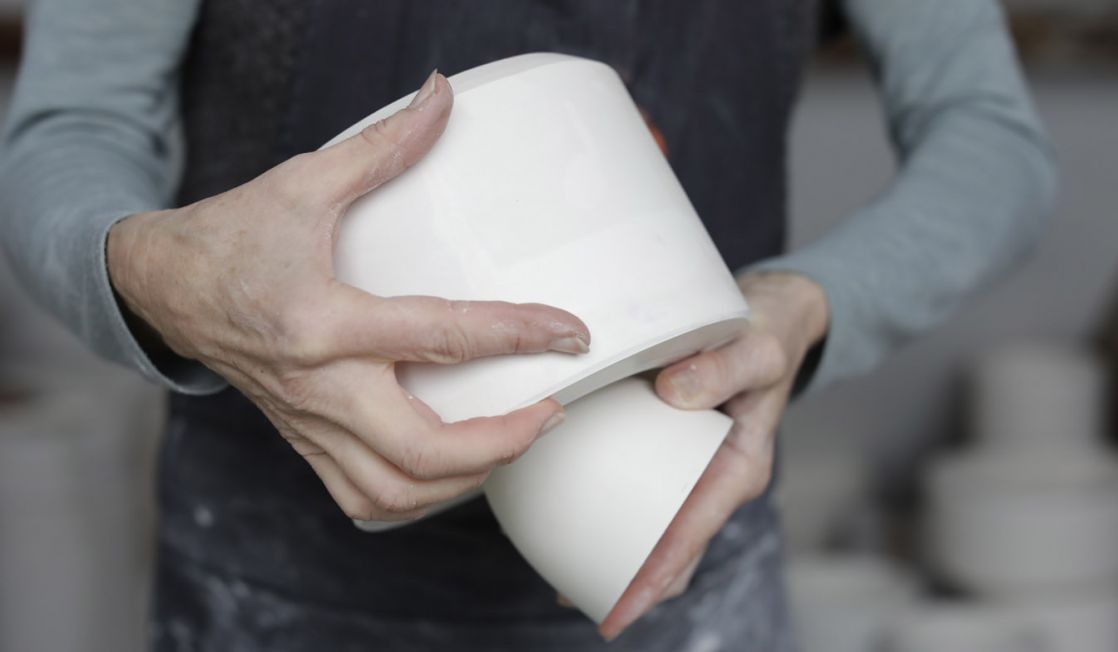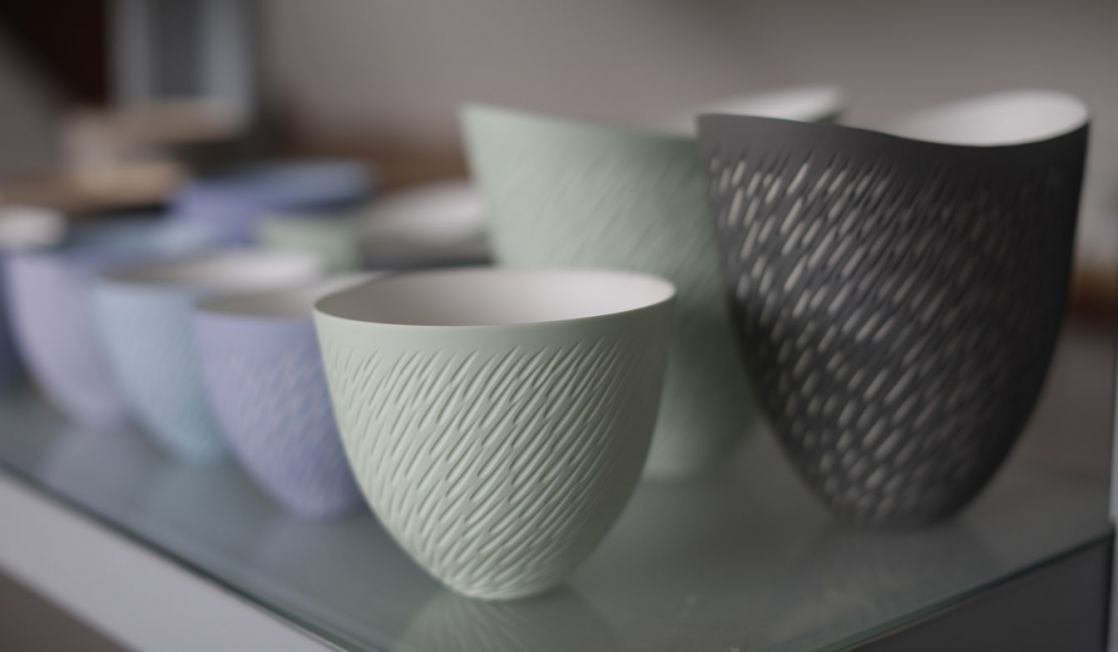Welcome to Ceramic Review
Ceramic Review is the magazine for contemporary and historical ceramics, ceramic art and pottery.
Ceramic Review Issue 334
July/August 2025
Ceramic Review is the magazine for contemporary and historical ceramics, ceramic art and pottery.
July/August 2025
'I aim to exploit bone china's inherent qualities of whiteness and translucency within my own practice.' In this video accompanying her masterclass in Ceramic Review issue 292 (July/August 2018), Sasha Wardell discusses the mould-making process she uses to make her bone china bowls, created using multi-layered slip-casting.
‘I had always been interested in art at school, but didn’t consider it as a career initially. After studying for my A levels in Art, French and German, I was planning on becoming a bilingual secretary, but then an inspirational art teacher suggested I consider art school training instead – so I left a career in languages behind. I had formal art training, which included a Foundation course in Cambridge in 1975, a BA at Bath Academy of Art (where I had originally applied to study graphics but transferred into the ceramics department) and subsequently an MA at Staffordshire University, Stoke-on-Trent.
While working in a couple of factories during an exchange scheme in Limoges, France and at Royal Doulton, I realised I was completely fascinated by the problem-solving aspect of ceramics, such as working out how moulds function and the idiosyncracies of bone china as a ceramic material. I graduated in 1981, set up my studio in 1982 and have been working for myself ever since.
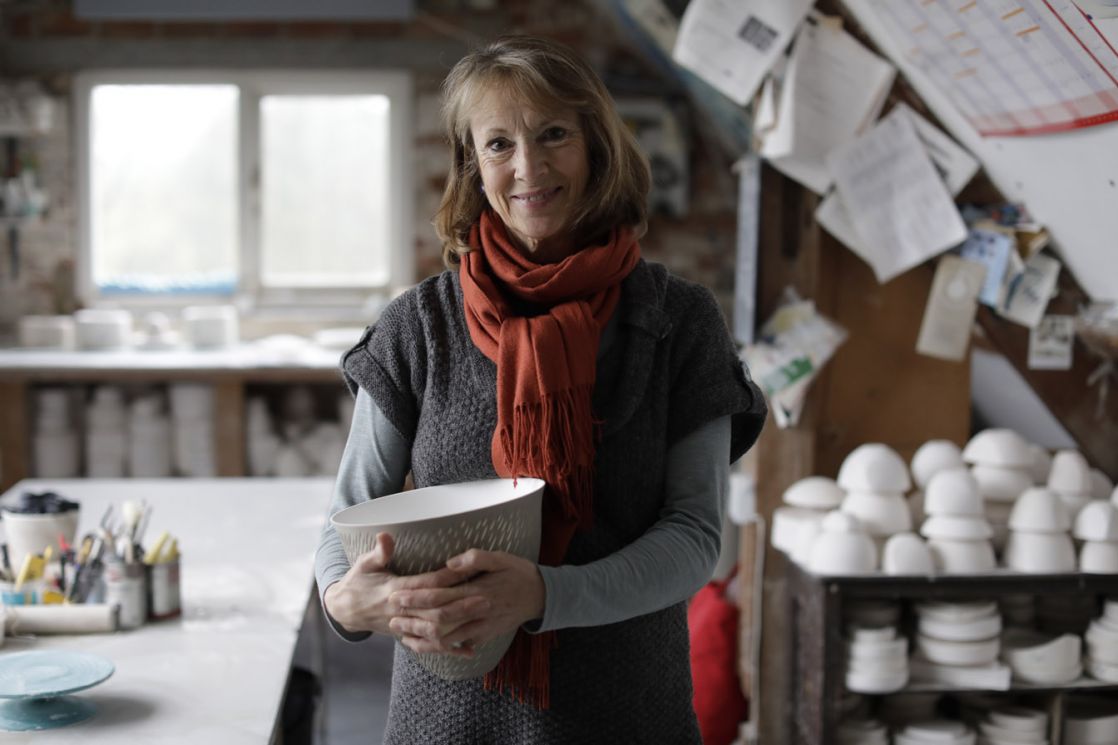
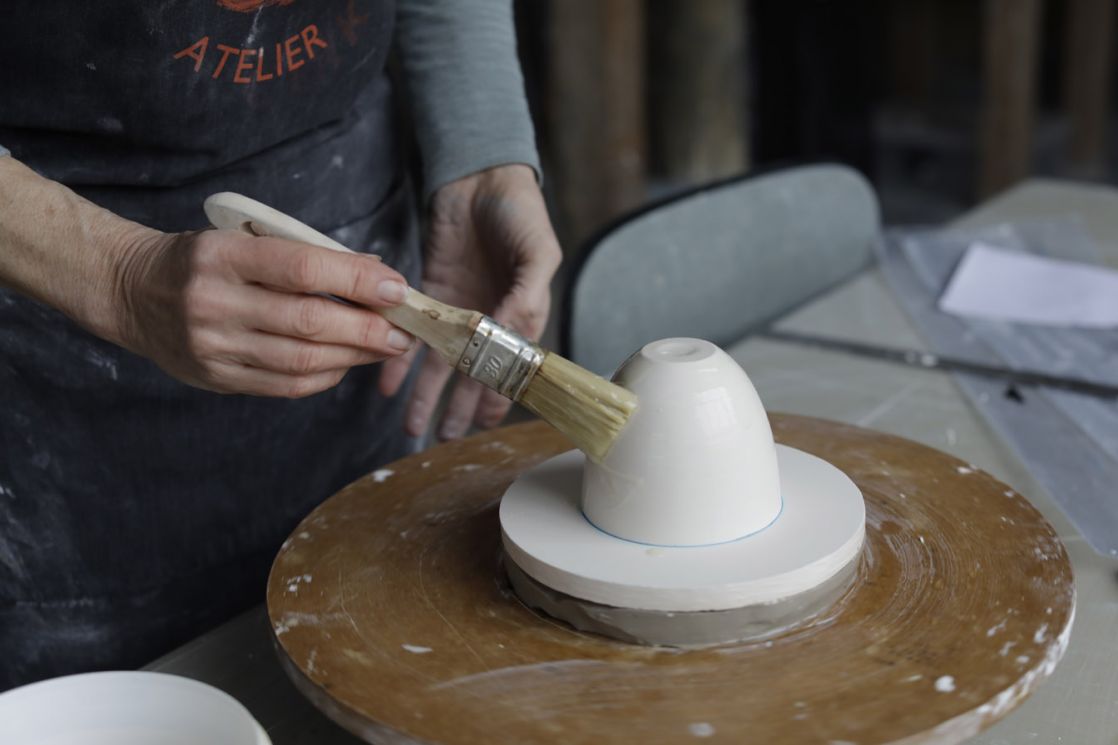
Although I look at the natural world for pattern and decoration, and light and form play an equally important role, I consider my work to be process-led above all. I have always been fascinated by the methods used in the ceramic industry, as well as by bone china itself. I aim to exploit the material’s inherent qualities of whiteness and translucency within my own practice.
In 1998, after several years of working with airbrushed decoration on bone china, I felt I had reached a point of saturation with the technique and so undertook a period of research at Bath Spa University. I wanted to develop new and different decorating processes that were aimed at maximising the translucent qualities of this material.
I became interested in multilayer casting methods after looking at various glass techniques and in particular those of Murano glass, which included the Sommerso and casing and overlaying processes. I felt this could easily be adapted to working with bone china using moulds and slip-casting.
Although I look at the natural world for pattern and decoration, and light and form play an equally important role, I consider my work to be process-led above all
The fact that these methods took advantage of the inherent qualities of bone china without the need to ‘apply’ decoration appealed to me, as it would ultimately mean a reduction in the number of firings required. The whiteness of the clay body offered a completely blank canvas for any addition of colour, however small, so coupled with its translucent properties, it served as a perfect material for colour experimentation too.
My masterclass for Ceramic Review describes the processes required to produce a simple drop-out mould with a removable reservoir ring, which is indispensable for the multilayered work I make.’
Learn how Sasha makes her work inside Ceramic Review issue 292 (July/August 2018), which features her full step-by-step masterclass.
